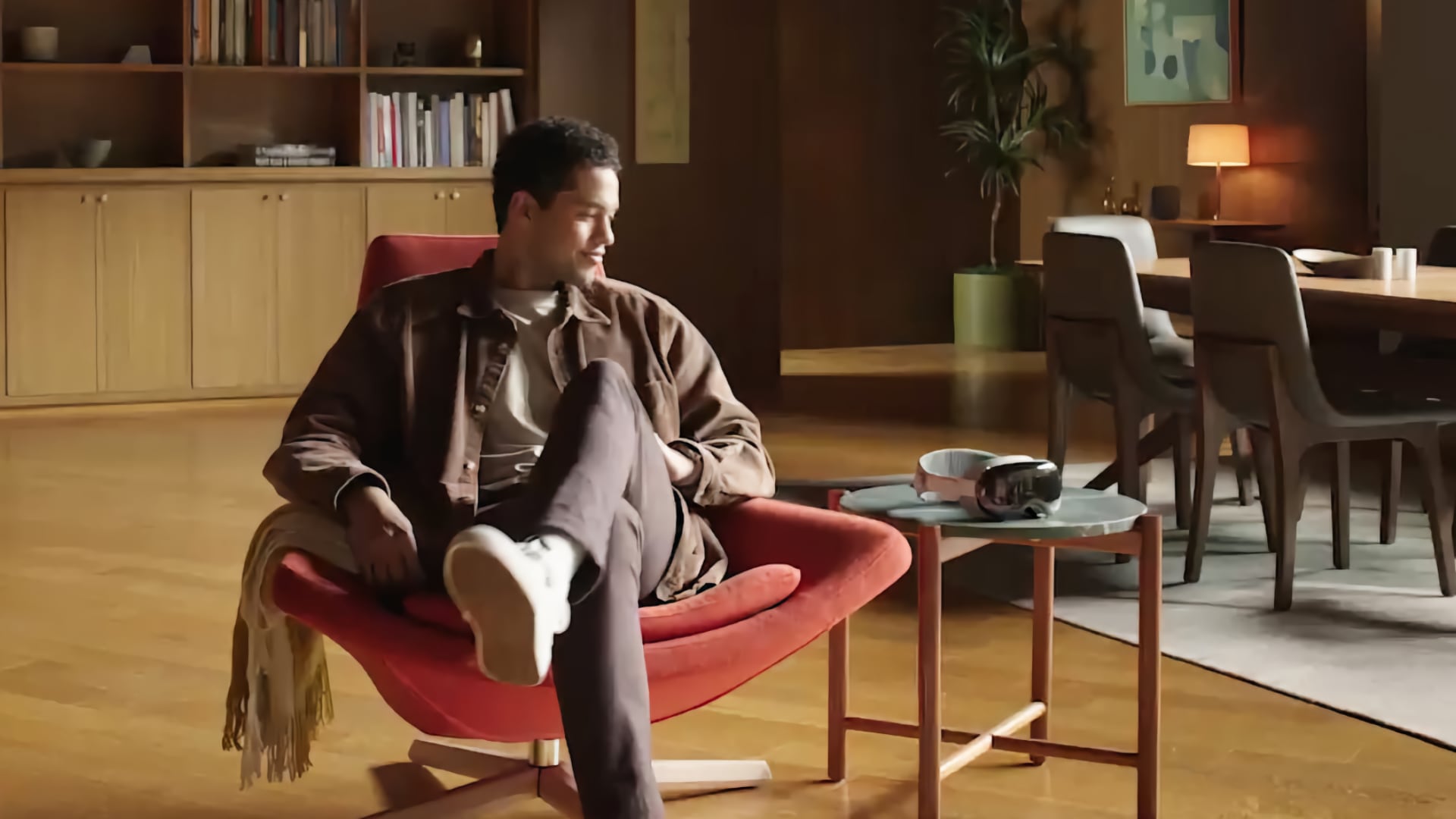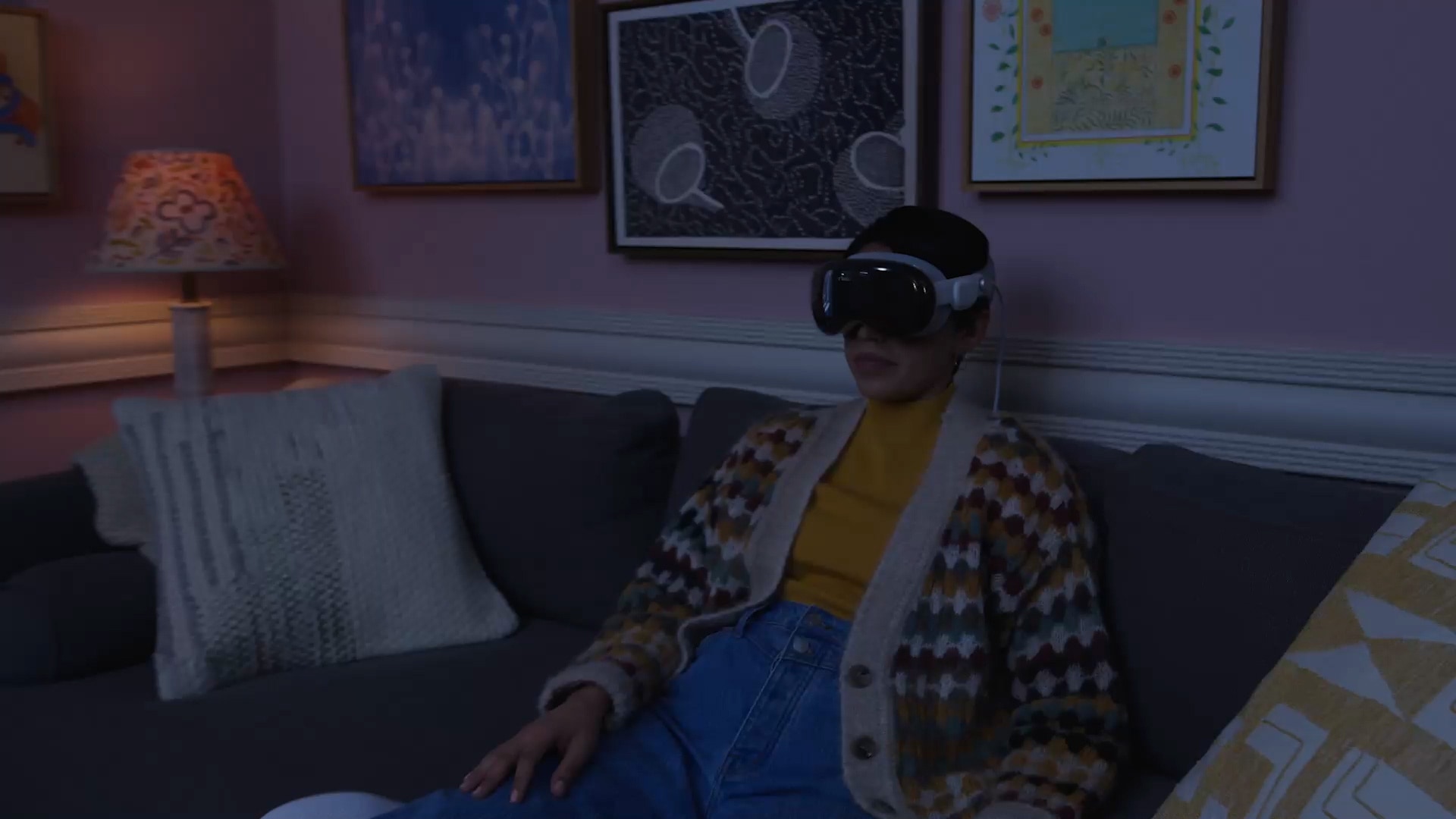Apple’s visionOS software defines a 10×10-feet system boundary for virtual reality (VR). Step outside this safe box, and the Vision Pro automatically stops VR.

It looks like the Vision Pro is conceived as a seated experience because VR content is constrained within a box measuring 10×10 feet or 3×3 meters.
Apple’s documentation confirms visionOS automatically turns off VR experiences and turns on passthrough video augmented reality (AR) mode if the user moves more than 1.5 meters, or five feet, from the initial position of their head.
Whether the headset imposes the same restriction when AR is active is a bit murky.
visionOS system boundary for VR is 10×10 feet
Hans Karlsson, chief technology officer of VR agency Mimir, commented that “Apple has crippled VR so that it stops when you move more than 1.5 meters.” Because of that, he wrote on Twitter, the Vision Pro’s VR mode is “for couch potatoes.”

Moving past 1.5 meters in any direction would be great for real volumetric video, Hans opined. It would also be perfect for games that make you move, like table tennis. This could also be why AR/VR games and Fitness+ aren’t supported on the Vision Pro (although the next Vision Pro should bring Fitness+ and Workout Mode).
Outside is a new potential playground now. At 64 I work standing in VR and have no problem. On the contrary, sitting all day is the worst you can do to your body. I normal life, we sit sometimes, stand sometimes. Why put constraints on a $3,500 device? It should be liberating
— Hans O. Karlsson 🇯🇵🇺🇦🇸🇪 (@VRmaninJapan) June 22, 2023
Why isn’t there VR outside the system boundary?
It looks like Apple is playing it safe here. The last thing the company needs is a class-action lawsuit because of VR falls and accidents.
Controversially I’m a fan of this decision. For the headset to take off and get huge adoption (hours per day), it’ll need to primarily be a seated experience. Room scale or heavy motion experiences are going to be niche forever due to room size constraints and fatigue.
— Chris Oslund (@EightTwo_Three) June 22, 2023
But can a Vision Pro wearer freely walk around the room without their AR environment also getting automatically turned off when outside the safe zone? The answer to that question is inconclusive at the moment, at best.
Does the same boundary apply to AR?
Hans on his part doesn’t mention whether Apple’s visionOS software imposes a 10×10-feet box when using augmented reality, too. The wording in Apple’s documentation doesn’t make it any clearer because the company prefers the term “immersive experience” instead of “augmented reality” or “virtual reality.”
From the visionOS developer documentation:
When you start a fully immersive experience, visionOS defines a system boundary that extends 1.5 meters from the initial position of the person’s head. If their head moves outside of that zone, the system automatically stops the immersive experience and turns on the external video again. This feature is an assistant to help prevent someone from colliding with objects.
Conclusively, Apple’s wording makes it seem like the system boundary only applies to VR experiences. We’ll update this article when we learn more.